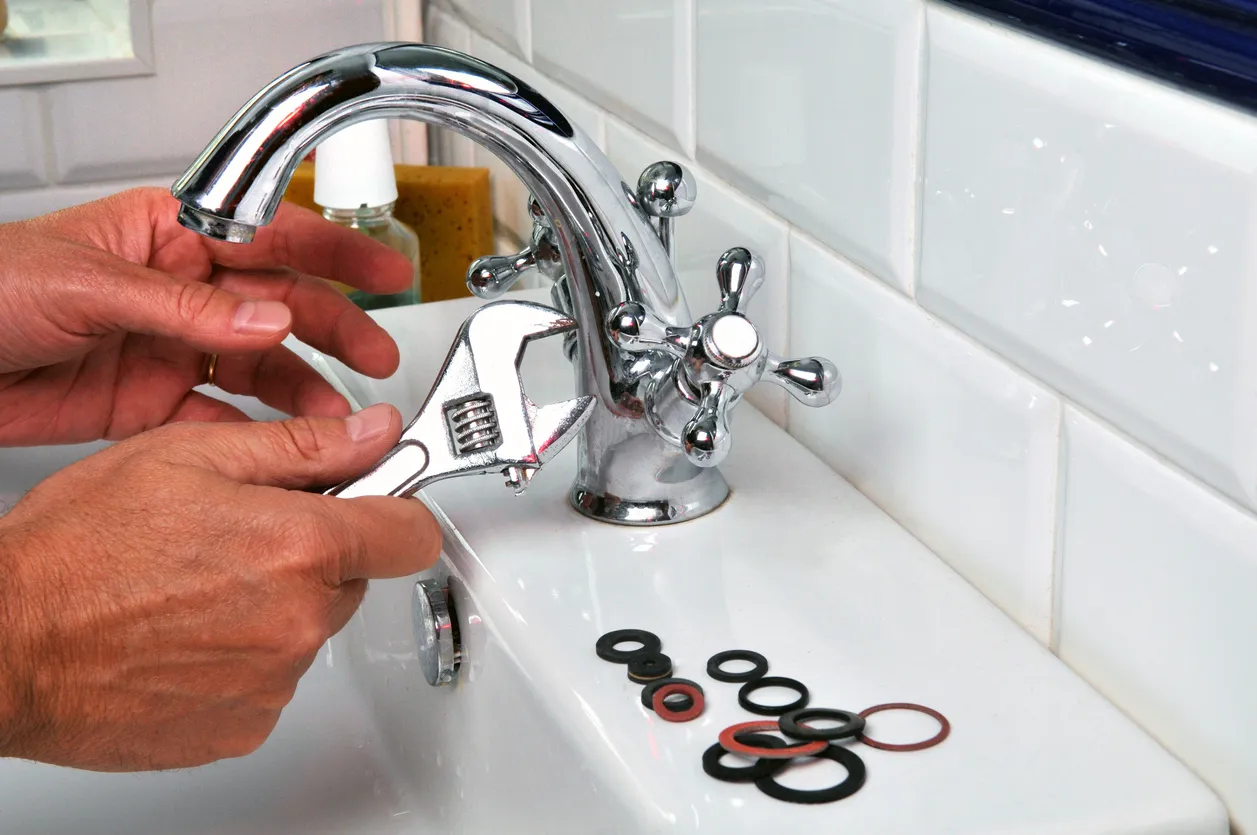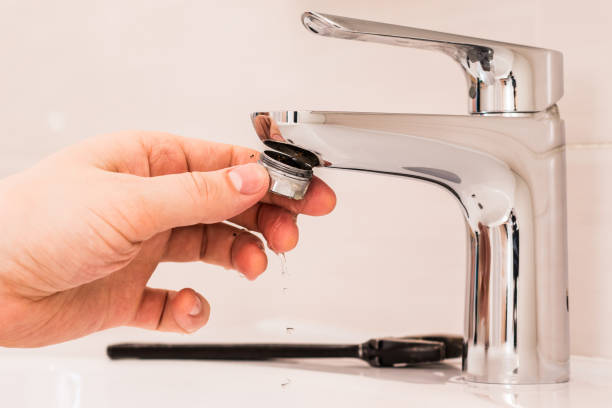Why It's Necessary to Repair a Dripping Faucet
Why It's Necessary to Repair a Dripping Faucet
Blog Article
They are making several good observations on Leaky Faucets: Why They Happen & What to Do About Them as a whole in the article followed below.

Dripping faucets might look like a minor hassle, yet their influence exceeds just the inconvenience of the noise. From wasting water to sustaining unneeded monetary costs and health threats, neglecting a trickling tap can result in numerous repercussions. In this short article, we'll delve into why it's critical to address this usual family issue immediately and efficiently.
Wastage of Water
Ecological Impact
Leaking taps contribute significantly to water waste. According to the Environmental Protection Agency (EPA), a single faucet trickling at one drip per secondly can lose more than 3,000 gallons of water per year. This not just stress water resources but additionally impacts ecosystems and wild animals based on them.
Financial Costs
Raised Water Expenses
Past the ecological effect, trickling faucets can blow up water expenses substantially. The collected wastage gradually translates into greater utility expenses, which can have been stayed clear of with prompt fixings.
Potential Building Damage
Moreover, prolonged leaking can lead to damage to fixtures and surfaces bordering the tap. Water build-up can create discoloration, corrosion, and also structural problems if left unattended, causing additional fixing costs.
Wellness Worries
Mold and Mildew Development
The constant existence of dampness from a dripping faucet produces a perfect atmosphere for mold and mildew and mold growth. These fungis not just endanger indoor air top quality but likewise posture health dangers, specifically for individuals with breathing problems or allergic reactions.
Waterborne Illness
Stationary water in trickling faucets can become a breeding ground for germs and various other virus, raising the risk of waterborne diseases. Contaminants such as Legionella bacteria flourish in stagnant water, potentially bring about major ailments when ingested or breathed in.
Do it yourself vs. Professional Repair service
Advantages and disadvantages of Do It Yourself Repair
While some may try to deal with a leaking tap themselves, do it yourself repairs come with their own collection of obstacles. Without correct knowledge and tools, DIY attempts can worsen the problem or lead to incomplete repairs, prolonging the problem.
Benefits of Hiring a Professional Plumber
Hiring a professional plumber ensures that the underlying cause of the dripping tap is addressed properly. Plumbing professionals possess the know-how and tools to diagnose and fix faucet problems successfully, conserving time and decreasing the threat of further damage.
Step-by-Step Guide to Repairing a Dripping Faucet
Tools Called for
Before trying to deal with a trickling tap, gather the needed tools, including an adjustable wrench, screwdrivers, replacement components (such as washing machines or cartridges), and plumber's tape.
Typical Tap Issues and Their Solutions
Recognize the sort of faucet and the details issue triggering the drip. Usual problems consist of worn-out washing machines, rusty valve seats, or defective O-rings. Refer to maker guidelines or on the internet tutorials for detailed assistance on repair services.
Preventive Measures
Routine Maintenance Tips
To prevent trickling faucets, do regular maintenance such as cleansing aerators, inspecting for leakages, and changing worn-out components without delay. Additionally, take into consideration mounting water-saving devices or upgrading to a lot more reliable components.
Relevance of Prompt Fixes
Addressing leaking faucets as soon as they're seen avoids further water wastage and potential damages, ultimately conserving both water and cash over time.
Impact on Residential Property Value
Assumption of Well-Maintained Residential Property
Preserving a home in good condition, consisting of attending to maintenance issues like trickling taps, enhances its viewed worth and desirability among potential customers or renters.
Influence on Resale Worth
Features with well-kept plumbing components, consisting of faucets, command higher resale values in the realty market. Dealing with trickling taps can add to a favorable perception throughout property inspections and negotiations.
Environmental Responsibility
Individual Payment to Preservation
Taking obligation for taking care of leaking faucets aligns with wider efforts towards water preservation and environmental sustainability. Every person's activities collectively make a significant influence on protecting precious sources.
Sustainable Living Practices
By prioritizing punctual repair work and taking on water-saving routines, individuals add to lasting living methods that benefit both present and future generations.
Conclusion
Addressing a trickling tap surpasses plain comfort; it's an essential step towards saving water, decreasing economic expenses, and safeguarding health and wellness and property. Whether with do it yourself repair work or expert support, doing something about it to fix leaking taps is a tiny yet impactful way to promote liable stewardship of sources and contribute to a healthier, much more lasting future.
How to Fix a Leaky Faucet: Step-by-Step Repair Guide
A leaky faucet may seem like a simple annoyance, but if it's not fixed promptly, that leak could cost hundreds to potentially thousands. From water damage to mold, mildew, and high water bills, even a tiny leak can be catastrophic if left unattended. Damage like this can even affect the overall value of your home, so it's important to take the right approach for leaky faucet repair. You may need the help of a plumber in some cases, but we've got a few tips you can try on how to fix a leaky faucet before calling the pros.
Four Faucet Types
When you're learning how to fix a leaky faucet, the first step is knowing what kind of faucet you're working with! There are four common types.
Cartridge Faucets
Cartridge faucets come in one- or two-handled varieties. In one-handled cartridge faucets, hot and cold water combines in a single cartridge. In the two-handled versions, hot and cold water are controlled separately and mixed in the faucet.
Ball Faucets
Ball faucets have a single lever you push up and down to adjust the pressure and rotate to change the temperature. A slotted metal ball controls the amount of water allowed into the spout.
Compression Washer Faucets
They're the oldest type of faucet, but they're still used in many homes — especially older ones. Compression faucets have two separate handles that, when turned, raise or lower the washer that seals a water valve. This valve stops water from flowing through the faucet when it is turned off.
Disc Faucets
Disc faucets rarely need to be repaired due to their maintenance-free design. The water flow is controlled by two discs — the upper one raises and lowers against a fixed lower disc, creating a watertight seal. If your disc faucet starts leaking, you may need to replace the seals or clean residue buildup from the inlets.
Fixing a Leaky Faucet
Step 1: Turn Off the Water
Whether you're learning how to fix a leaky bathtub faucet or how to fix a leaky kitchen faucet, always turn off the water supply to your working area when you're fixing a leak. The last thing you want is a flood added to your list of things to fix.
Look for the shutoff valves below your sink or around the tub and turn them clockwise to stop the water flow. If your faucet doesn't have shutoff valves, you may need to turn off the water for the whole house. Check to make sure it's off by turning the faucet on. If nothing comes out, you're ready to start the repair.
Step 2: Take Apart the Faucet
How you disassemble your faucet depends on the type of fixture you have. You can use a flathead screwdriver to remove the caps on top of the handle or handles for cartridge and compression faucets. Inside, you should see handle screws. Unscrew these with a screwdriver to remove the handle.
Disc- and ball-style faucets will typically have an inlet screw near the handle, and removing that will reveal the interior of the faucet.
Detach the Valve Stem
For cartridge- and compression-style faucets, you'll see the inner valve stem or cartridge once you remove the faucet handles. If you have a compression faucet, unscrew the brass valve stem. If you have a cartridge faucet, pull out the cartridge. If your cartridge has been in place for a while, it may require some tools or extra force to remove it due to mineral deposits.
Examine and Replace Parts
Once you've removed the parts, check them out to confirm what needs to be replaced. You may see corroded rubber washers, O-rings, stems, or cartridges. On a ball-style faucet, check the seats and springs for damage.
If you need to repair a leaky disc faucet, check the inlet and seals on the lower disc.
Once you determine what parts must be replaced, visit your local hardware store. Bring the damaged parts with you to ensure you can purchase the correct components to replace them.
Clean Valves and Faucet Cavity
If you've removed a stem or cartridge, you may notice mineral buildup in the faucet's threads. Use white vinegar to clean the valve seat by soaking it for a few minutes, then scrub it away with a soft toothbrush and rinse with warm water. You can also clean the interior of the faucet in the same way.
Reassemble the Faucet
Once your faucet is cleaned and the required parts have been replaced, it's time to reassemble it. Put the pieces back together and slowly turn the water supply back on. Doing this slowly is crucial because too much initial water pressure can damage the new hardware you've just installed.
https://homewarranty.firstam.com/blog/how-to-fix-leaky-faucet

I'm just very drawn to Water Dripping from Faucet: Why and How to Fix and I really hope you enjoyed reading the entire piece. Sharing is caring. Helping people is fun. Thanks for going through it.
Report this page